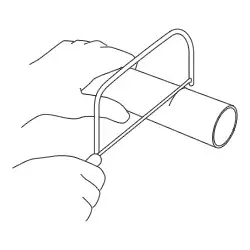There are quite a wide variety of systems for plastic waste pipes. The main categories are outlined below. Unfortunately, due to their different characteristics and composition, they are not always interchangeable. When extending or adapting an existing plastic waste set up, be sure to either buy the same/compatible type or, if buying a different type, be sure to get suitable adapters for the change-over point.
There are four main sizes available, each with their own intended use. You’ll probably discover though that these are not always adhered to.
21mm – overflows
32mm – hand basin waste
40mm – baths and sinks
110mm – soil pipes
Fittings for joining pipe


There is a huge range of fittings – part of the reason being that waste pipes are not suitable for bending in the same way as with copper pipe. You will need to plan your work carefully to ensure you have all the fittings needed for the job without buying surplus.
Cutting plastic waste pipe

Plastic pipes are easily cut using a small hacksaw. It is important, for good work, to cut them square. The easiest method for accomplishing this is to mark the position of the cut and wrap a straight edged piece of paper around the pipe to act as a guide. By lining up the edge of the paper with itself as it is wrapped around the pipe, you can be sure the cut line will be square. Either mark this with a pencil or simply cut alongside the paper.
As with all pipework, it is important to provide support. This is particularly relevant with plastic waste pipes as they have a tendency to sag over time. Simple plastic brackets can be fitted at regular intervals.
Waste pipes should always run downhill towards the drain. Failure to do so will result in waste water pooling in the pipe, and draining away slowly from the appliance.
Waste types
Compression
Solvent weld
Push-fit
